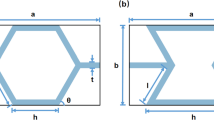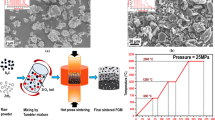Conclusions
-
1.
The mechanical properties of beryllium bronze in the microsection considerably exceed those attained for macrosections.
-
2.
The tempering regimes for microsections are substantially different from those established for macrosections.
For microribbons made with a total reduction of more than 50%, the optimum tempering regime is 270°C and soaking for 40 min.
-
3.
Raising the heating temperature of the wire prior to quenching from 730–800° does not bring about any change in the strength or elastic properties of microribbon made from it with a high degree of deformation (more than 50%).
-
4.
It was established that the elastic recovery (during torsion) of beryllium bronze microribbon is decisively influenced by the presence of oxide films on the surface, no matter whether formed during heat-treatment as a result of corrosion, or due to any other origin. These films sharply increase the reverse elastic recovery.
Similar content being viewed by others
Literature Cited
Z. A. Timofeeva, Manufacture and Tension Testing of Alloys Developed by TsNIIChM [in Russian]. Trudy VNIIEP, No. 2, TsINTI of Electrical Engineering and Machine Building (1960).
Additional information
Translated from Metallovedenie i Termicheskaya Obrabotka Metallov, No. 3, pp. 33–36, March, 1965
Rights and permissions
About this article
Cite this article
Timofeeva, Z.A., Zhermunskaya, L.B. Study of strength and elastic properties of microribbon made from BrB2 beryllium bronze. Met Sci Heat Treat 7, 172–175 (1965). https://doi.org/10.1007/BF00658527
Issue Date:
DOI: https://doi.org/10.1007/BF00658527




